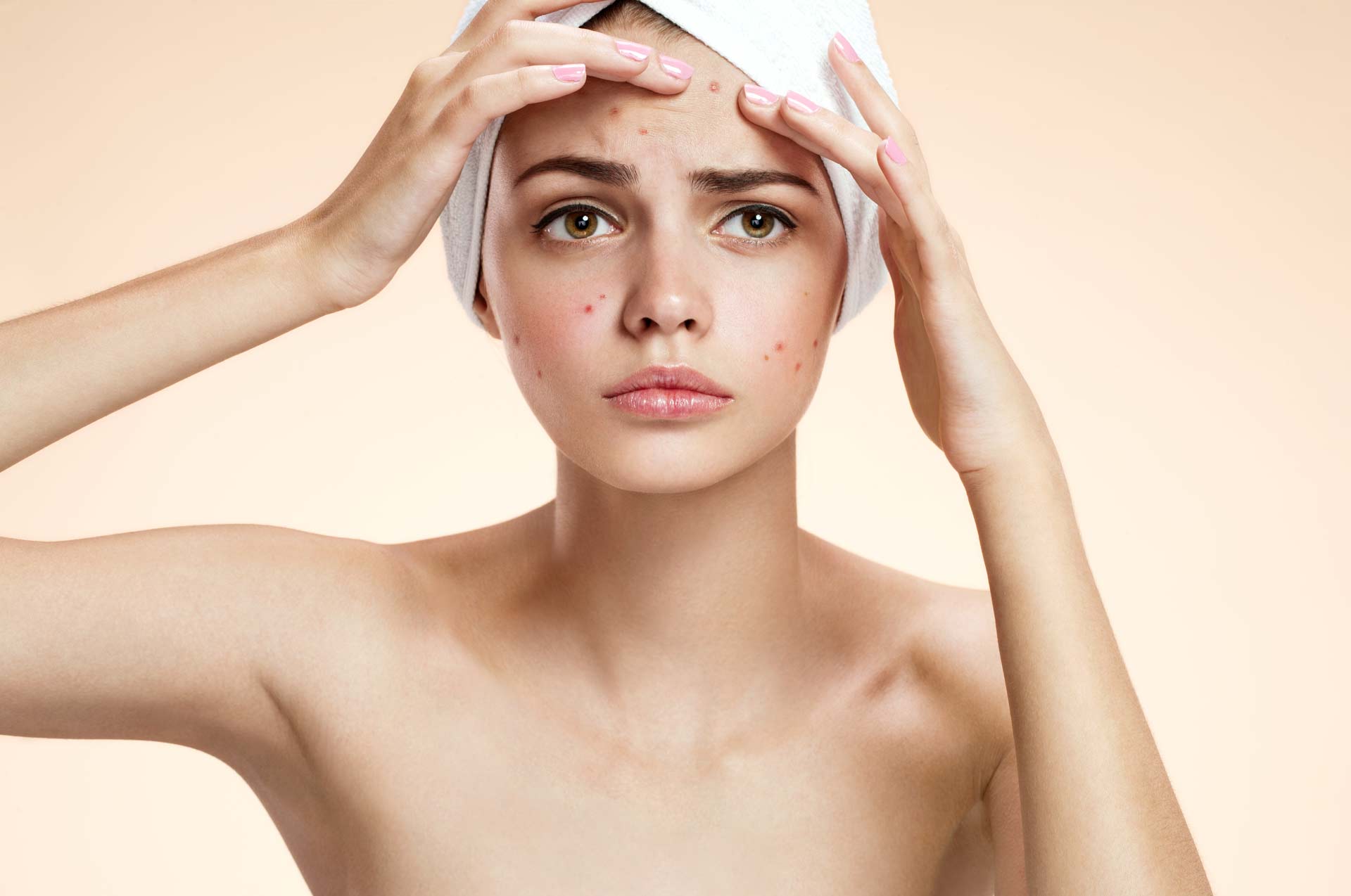Acne is a skin disorder that principally occurs in adolescence in 85% of the cases; However acne can occur even in newborns or children and many times continues to exist in adulthood.
The most common type of acne is AcneVulgaris, which means “common acne” and most of the people suffer from this kind of acne. The face and upper part of the neck are more frequently affected, however the back, the chest and the shoulders can also be affected.
The pathogenic factors of acne are:
- Seborrhoea (excessive production of sebum).
- Disorder of keratinization and keratinocyte apoptosis that lead to obstruction of the entrance of the pilosebaceous glands and to the creation of blackheads (“black” and “white” spots).
- Colonization of the pilosebaceous unit by Propionibacteriumacnes.
- Inflammation.


Some factors that are related with acne:
- Heredity/genetic disorders
- Hormonal activity
- Stress
- Microbial contamination
- Skin irritation
- The use of anabolic steroids
- Any medicines that contain halogens, lithium or androgens
- Exposure to high levels of chlorine
- Exposure to drugs
The treatment of acne is local and systemic.
The local treatment consists of creams of benzoyl peroxide, retinoic acid, azelaic acid, local antibiotics such as clindamycin, erythromycin and tetracycline, as well as peelings of glycolic acid, trichloroacetic acid, pyruvic acid and Jessner (combination of salicylic acid, lactic acid and resorcinol).
The systemic therapy consists of the oral administration of antibiotics, such as minocycline, azithromycin, doxycycline, erythromycin. Additionally, hormonal treatment is used, for example with the combination of cyproterone and ethinylestradiol, when there are the appropriate indications, for example in the case of polycystic ovary syndrome.
The systemic administration of retinoic acid has brought about a revolutionary progress in the treatment of acne; it is administered for a few months and always with laboratory monitoring with impressive results, but has teratogenic effects.
The results in any case can be observed within a period of a few weeks.
The injection of triamcinolone in the lesions is helpful in many cases.
The use of NdYAGlaser is helpful in 4-5 monthly treatment sessions in the inflammatory lesions of acne, as it causes a mild thermal destruction of the cells and therefore it stimulates the generation of new skin tissue, as well as the production of collagen. The Fractionallaser CO2 is excellent for the treatment of acne scars also in 4-5 monthly sessions. The Fractional (Fraxel) laser can treat accurately thousands of tiny areas of the skin, by penetrating under the skin surface and destroying all of its altered cells. The result is a natural activation of the fibroblasts for the production of new collagen, without any complications. The treatment with fractionallaser stimulates the natural healing process of the human body itself, which regenerates the damaged skin.
The lasers we have mentioned are slightly painful, but perfectly tolerable by the patient, especially after the administration of a local anesthetic cream before the treatment session.
The multi-factorial and combinatory treatment of acne with persistence and patience, the balanced nutrition and the avoidance of injury in the damaged skin area, in any case, contributes to the optimization of the result and therefore of the psychology of the patients also, which is many cases is disrupted due to the aesthetic problem that accompanies this so common disorder.





